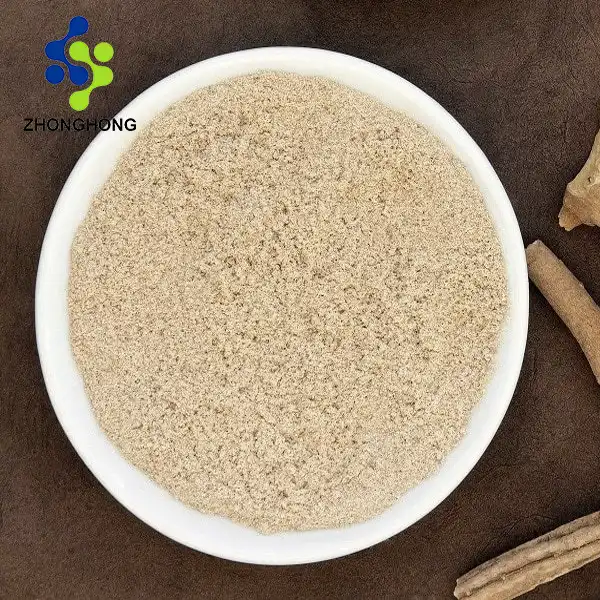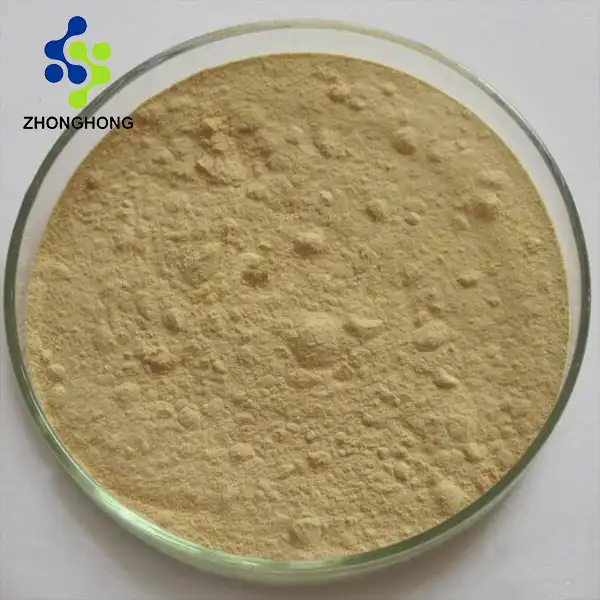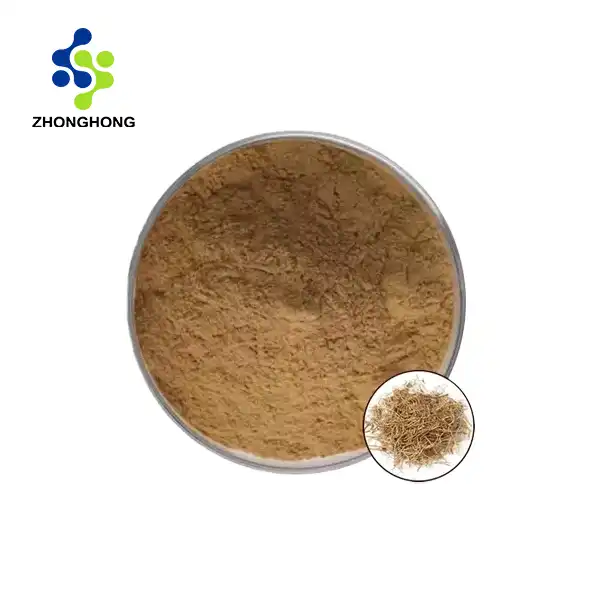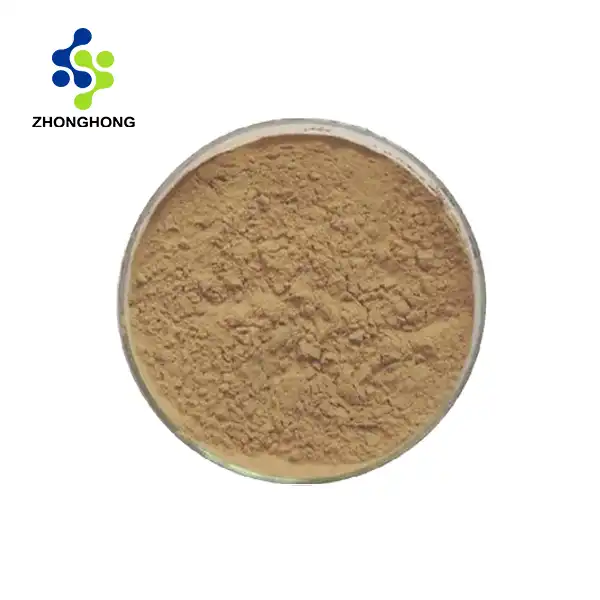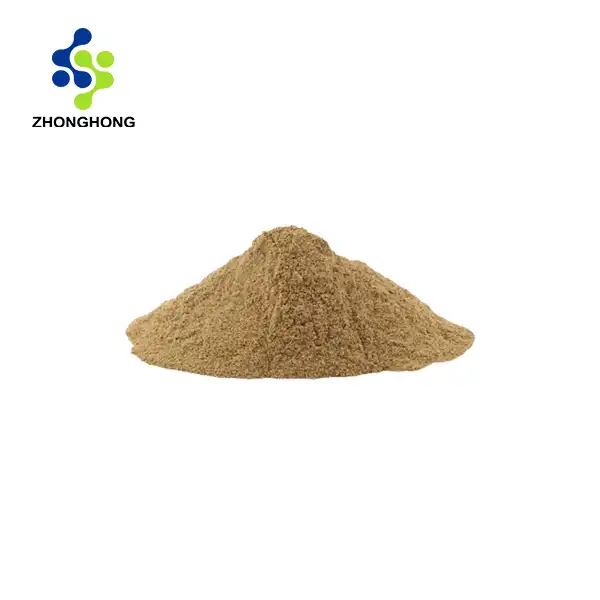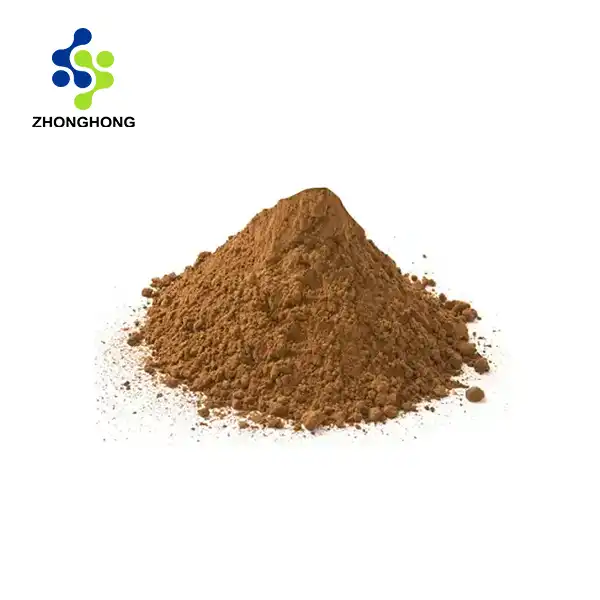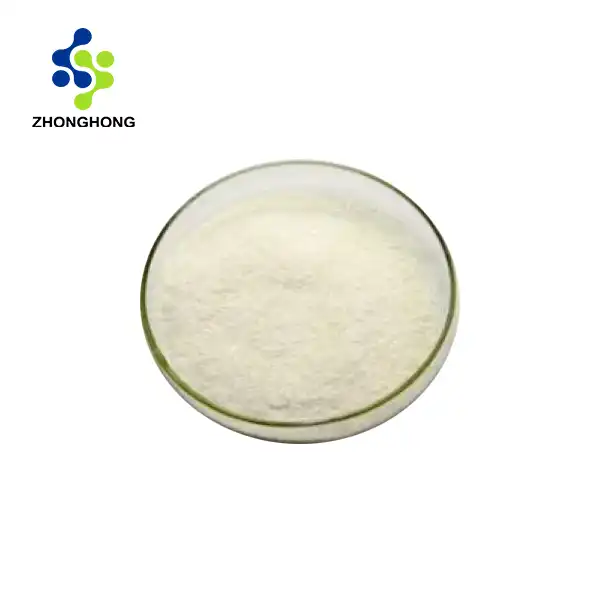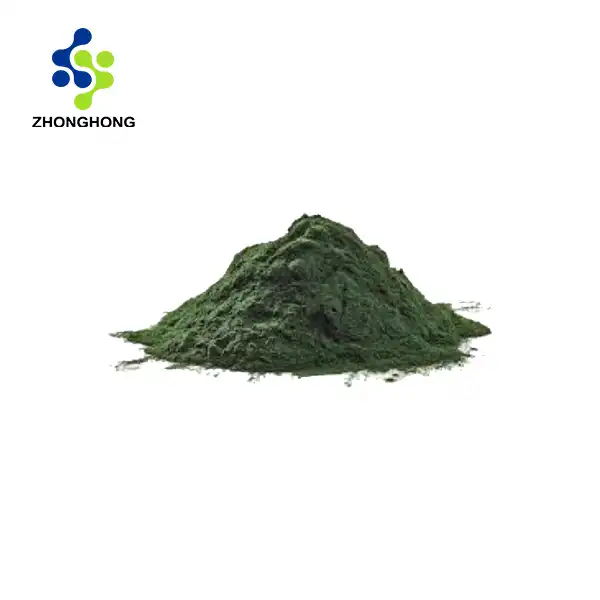Cistanche Deserticola Extract: An Ancient Remedy Revisited
2025-01-22 21:05:43
In the vast expanse of traditional medicine, few remedies have stood the test of time quite like Cistanche deserticola. This parasitic plant, often referred to as the "ginseng of the desert," has been a cornerstone of Chinese herbal medicine for centuries. Today, we're witnessing a resurgence of interest in this ancient remedy, particularly in its extract form. Let's delve into the fascinating world of Cistanche deserticola extract and explore its potential in modern health and wellness.
The History and Traditional Uses of Cistanche
Cistanche deserticola, colloquially known as "Rou Cong-Rong" in Chinese, has a rich history deeply rooted in traditional Chinese medicine (TCM). This parasitic plant thrives in the arid regions of northwestern China, attaching itself to the roots of desert trees to survive. Its ability to flourish in such harsh conditions has long been associated with its purported medicinal properties. In TCM, Cistanche has been revered for its alleged ability to nourish the kidneys, fortify the essence, and replenish vital energy. It was often prescribed to address a range of ailments, including impotence, infertility, chronic fatigue, and constipation. The plant's reputation as a potent tonic for overall vitality earned it the moniker "desert ginseng," drawing parallels to the well-known adaptogenic herb. Interestingly, the use of Cistanche wasn't limited to internal applications. Historical records suggest that it was also used topically to treat skin conditions and promote wound healing. This versatility in application speaks to the plant's diverse phytochemical composition, which we now know includes compounds like phenylethanoid glycosides and lignans. As we transition from traditional uses to modern applications, it's crucial to note that while historical use provides valuable insights, contemporary scientific research is essential to validate these claims and understand the mechanisms behind Cistanche's potential benefits.
Modern Applications of Cistanche in Health and Wellness
The advent of modern scientific research has shed new light on the potential applications of Cistanche deserticola extract. While many of its traditional uses are still being investigated, several promising areas of research have emerged:
Cognitive Function and Neuroprotection: One of the most intriguing areas of research involves Cistanche's potential impact on brain health. Preclinical studies suggest that compounds found in Cistanche extract, particularly echinacoside, may have neuroprotective properties. These compounds could potentially support cognitive function, enhance memory, and even offer some protection against neurodegenerative processes.
Immune System Support: Cistanche extract has demonstrated immunomodulatory effects in various studies. It appears to influence the production and activity of immune cells, potentially enhancing the body's natural defense mechanisms. This could be particularly beneficial for supporting immune function in older adults, as the immune system naturally declines with age.
Antioxidant Properties: The phenylethanoid glycosides found in Cistanche are potent antioxidants. These compounds may help combat oxidative stress, which is implicated in various chronic diseases and the aging process. By neutralizing free radicals, Cistanche extract could contribute to overall cellular health and longevity.
Metabolic Health: Some research suggests that Cistanche extract may have a positive impact on metabolic health. Studies have indicated potential benefits for blood sugar regulation and lipid metabolism, though more research is needed to fully understand these effects.
Sexual and Reproductive Health: In line with its traditional use, modern research is exploring Cistanche's potential benefits for sexual and reproductive health. While results are preliminary, some studies suggest it may have aphrodisiac properties and could potentially support reproductive function.
Bone Health: Emerging research indicates that Cistanche extract may have a positive impact on bone health. Preclinical studies have shown promising results in terms of enhancing bone mineral density and supporting overall bone strength.
It's important to note that while these areas of research are promising, many of the studies are preclinical or small-scale human trials. Larger, well-designed clinical studies are necessary to fully elucidate the benefits and potential applications of Cistanche deserticola extract in human health.
Choosing the Right Cistanche Extract for You
As interest in Cistanche deserticola extract grows, so does the number of products available on the market. Choosing the right extract is crucial to ensure you're getting a high-quality product that may provide the potential benefits you're seeking. Here are some key factors to consider:
Standardization: Look for extracts that are standardized to contain a specific percentage of active compounds, particularly echinacoside. Standardization helps ensure consistency in potency and quality from batch to batch.
Source and Sustainability: Given that Cistanche deserticola is an endangered species, it's important to choose products from companies that prioritize sustainable sourcing. Some manufacturers use alternative species like Cistanche tubulosa, which shares many of the same compounds and is more abundant.
Form and Bioavailability: Cistanche extract is available in various forms, including capsules, powders, and liquid extracts. Consider which form is most convenient for you and potentially offers the best bioavailability.
Third-Party Testing: Reputable manufacturers will have their products tested by independent laboratories for purity and potency. Look for products that provide certificates of analysis or other evidence of third-party testing.
Dosage: Follow the recommended dosage on the product label or as advised by a healthcare professional. It's important not to exceed recommended doses, as the long-term effects of high doses are not well-studied.
Complementary Ingredients: Some Cistanche products may be formulated with additional herbs or nutrients. Consider whether these complementary ingredients align with your health goals.
Quality of Manufacturing: Choose products from manufacturers that follow Good Manufacturing Practices (GMP) to ensure quality and safety.
Conclusion
Remember, while Cistanche deserticola extract shows promise in various areas of health and wellness, it's not a panacea. It's best used as part of a holistic approach to health that includes a balanced diet, regular exercise, and other healthy lifestyle practices. As with any supplement, it's crucial to consult with a healthcare professional before adding Cistanche extract to your regimen, especially if you have pre-existing health conditions or are taking medications. The journey of Cistanche deserticola from traditional remedy to modern supplement exemplifies the ongoing dialogue between ancient wisdom and contemporary science. As research continues to unfold, we may discover even more about this fascinating plant and its potential applications in health and wellness. Are you interested in exploring the benefits of Cistanche deserticola extract for your health and wellness journey? Shaanxi Zhonghong Investment Technology Co., Ltd. is at the forefront of research and production of high-quality Cistanche extracts. For more information about our products or to discuss how Cistanche could fit into your wellness routine, please don't hesitate to reach out to us at liaodaohai@gmail.com. Our team of experts is ready to assist you in making informed decisions about your health.
References
1. Zhang, L., et al. (2018). "Cistanche deserticola Y. C. Ma, an overview of its phytochemistry and pharmacology." Phytomedicine, 45, 1-13.
2. Wang, T., et al. (2016). "Cistanche deserticola Y. C. Ma: Phytochemistry and Pharmacological Effects." Chinese Journal of Natural Medicines, 14(1), 17-30.
3. Li, F., et al. (2019). "Cistanche deserticola polysaccharides protects PC12 cells against OGD/R-induced injury." Biomedicine & Pharmacotherapy, 117, 109182.
4. Gu, C., et al. (2016). "Cistanche deserticola polysaccharide alleviates cognitive impairment and brain senescence in D-galactose-treated mice." Neurochemistry International, 97, 64-72.
5. Xiong, W. T., et al. (2014). "Protective effect of Cistanche deserticola Ma on radiation-induced oxidative injury in mice." Molecules, 19(11), 17747-17758.
6. Jiang, Y., and Tu, P. F. (2009). "Analysis of chemical constituents in Cistanche species." Journal of Chromatography A, 1216(11), 1970-1979.
_1728976869676.webp)
